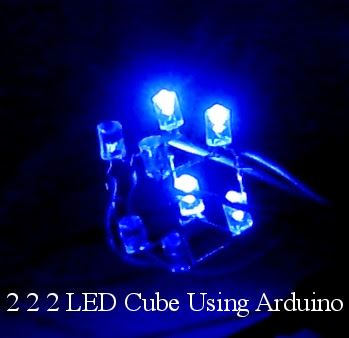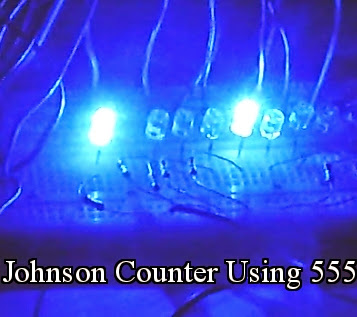| Next: Working of Circuit |
We had already seen the Best Demonstration of Interfacing 4*4 Button Pad to Arduino Mega with Circuit and Program. Here, we will connect a common cathode seven segment display in which, the number we are pressing in the 4*4 button pad will be displayed. Circuit is done as shown in the following diagram.
Connections of 4*4 button pad to arduino can be summarized as given below.
K pin of 4*4 button pad is connected to the 4th digital pin of Arduino mega.
L pin of 4*4 button pad is connected to the 5th digital pin of Arduino mega.
M pin of 4*4 button pad is connected to the 6th digital pin of Arduino mega.
N pin of 4*4 button pad is connected to the 7th digital pin of Arduino mega.
O pin of 4*4 button pad is connected to the 8th digital pin of Arduino mega.
P pin of 4*4 button pad is connected to the 9th digital pin of Arduino mega.
Q pin of 4*4 button pad is connected to the 10th digital pin of Arduino mega.
R pin of 4*4 button pad is connected to the 11th digital pin of Arduino mega.
In addition to these, K L M N O P Q R are connected to pull up resistors of 1K each. Other end of pull up resistors are shorted and is given to the 5V pin of arduino mega. Pull up resistors helps to pull the voltage level to HIGH always. Read this blog to get a clear idea about the use of pull up resistors.
Seven segment display driver IC used here is 4511. Connections of 4511 driver IC to arduino can be summarized as given below.
D0 pin of 4511 is connected to the 0th digital pin of Arduino mega.
D1 pin of 4511 is connected to the 1st digital pin of Arduino mega.
D2 pin of 4511 is connected to the 2nd digital pin of Arduino mega.
D3 pin of 4511 is connected to the 4th digital pin of Arduino mega.
LE pin of 4511 is connected to the 12th digital pin of Arduino mega.
In addition to these, BLbar and LTbar should be connected to VCC. VCC is normally given from a 5V regulator.
If D3 D2 D1 D0 are 0 0 0 0 respectively, display will be 0, when LE is LOW.
If D3 D2 D1 D0 are 0 0 0 1 respectively, display will be 1, when LE is LOW.
If D3 D2 D1 D0 are 0 0 1 0 respectively, display will be 2, when LE is LOW.
If D3 D2 D1 D0 are 0 0 1 1 respectively, display will be 3, when LE is LOW.
If D3 D2 D1 D0 are 0 1 0 0 respectively, display will be 4, when LE is LOW.
If D3 D2 D1 D0 are 0 1 0 1 respectively, display will be 5, when LE is LOW.
If D3 D2 D1 D0 are 0 1 1 0 respectively, display will be 6, when LE is LOW.
If D3 D2 D1 D0 are 0 1 1 1 respectively, display will be 7, when LE is LOW.
If D3 D2 D1 D0 are 1 0 0 0 respectively, display will be 8, when LE is LOW.
If D3 D2 D1 D0 are 1 0 0 1 respectively, display will be 9, when LE is LOW.
If LE is HIGH, output will not change even if D3 D2 D1 D0 changes. If LTbar is LOW, all the segments will turn on and is independant of all other inputs. Display will be 8. If BLbar is LOW, all the segments will be OFF and is independant of all other inputs.
In addition to these, BLbar and LTbar should be connected to VCC. VCC is normally given from a 5V regulator.
If D3 D2 D1 D0 are 0 0 0 0 respectively, display will be 0, when LE is LOW.
If D3 D2 D1 D0 are 0 0 0 1 respectively, display will be 1, when LE is LOW.
If D3 D2 D1 D0 are 0 0 1 0 respectively, display will be 2, when LE is LOW.
If D3 D2 D1 D0 are 0 0 1 1 respectively, display will be 3, when LE is LOW.
If D3 D2 D1 D0 are 0 1 0 0 respectively, display will be 4, when LE is LOW.
If D3 D2 D1 D0 are 0 1 0 1 respectively, display will be 5, when LE is LOW.
If D3 D2 D1 D0 are 0 1 1 0 respectively, display will be 6, when LE is LOW.
If D3 D2 D1 D0 are 0 1 1 1 respectively, display will be 7, when LE is LOW.
If D3 D2 D1 D0 are 1 0 0 0 respectively, display will be 8, when LE is LOW.
If D3 D2 D1 D0 are 1 0 0 1 respectively, display will be 9, when LE is LOW.
If LE is HIGH, output will not change even if D3 D2 D1 D0 changes. If LTbar is LOW, all the segments will turn on and is independant of all other inputs. Display will be 8. If BLbar is LOW, all the segments will be OFF and is independant of all other inputs.
Pinout Diagram of 4511 Common Cathode Seven Segment Display Driver
Connections of 4511 driver to common cathode seven segment display can be summarized as given below.
Qa pin of 4511 is connected to the 'a' pin of seven segment display.
Qb pin of 4511 is connected to the 'b' pin of seven segment display.
Qc pin of 4511 is connected to the 'c' pin of seven segment display.
Qd pin of 4511 is connected to the 'd' pin of seven segment display.
Qe pin of 4511 is connected to the 'e' pin of seven segment display.
Qf pin of 4511 is connected to the 'f ' pin of seven segment display.
Qg pin of 4511 is connected to the 'g' pin of seven segment display.
dp pin of 4511 is left unconnected.
Pinout Diagram of Common Cathode Seven Segment Display
Pinout diagram of common cathode seven segment display is given below
| Next: Working of Circuit |
.jpg)

.jpg)





0 comments: